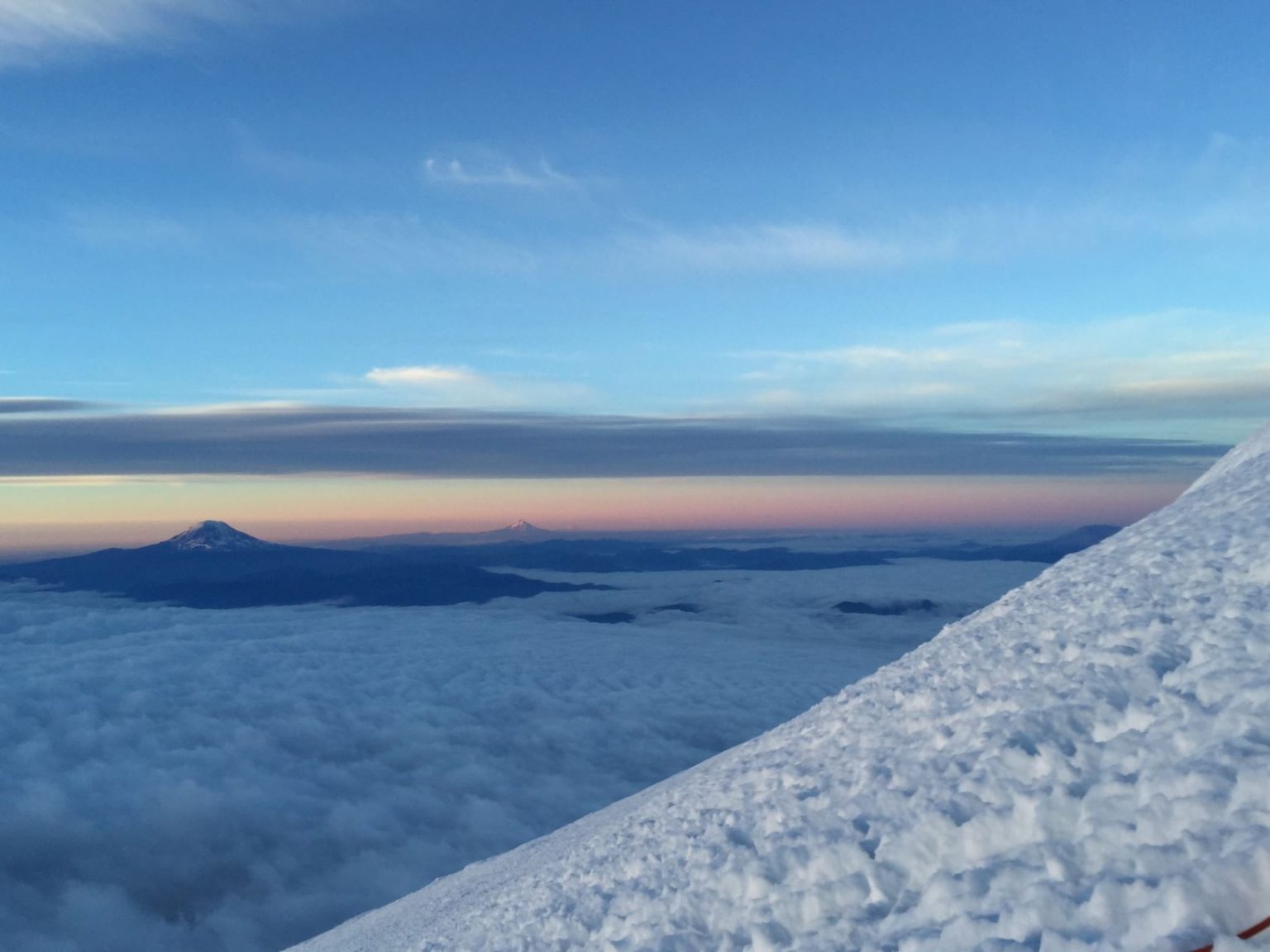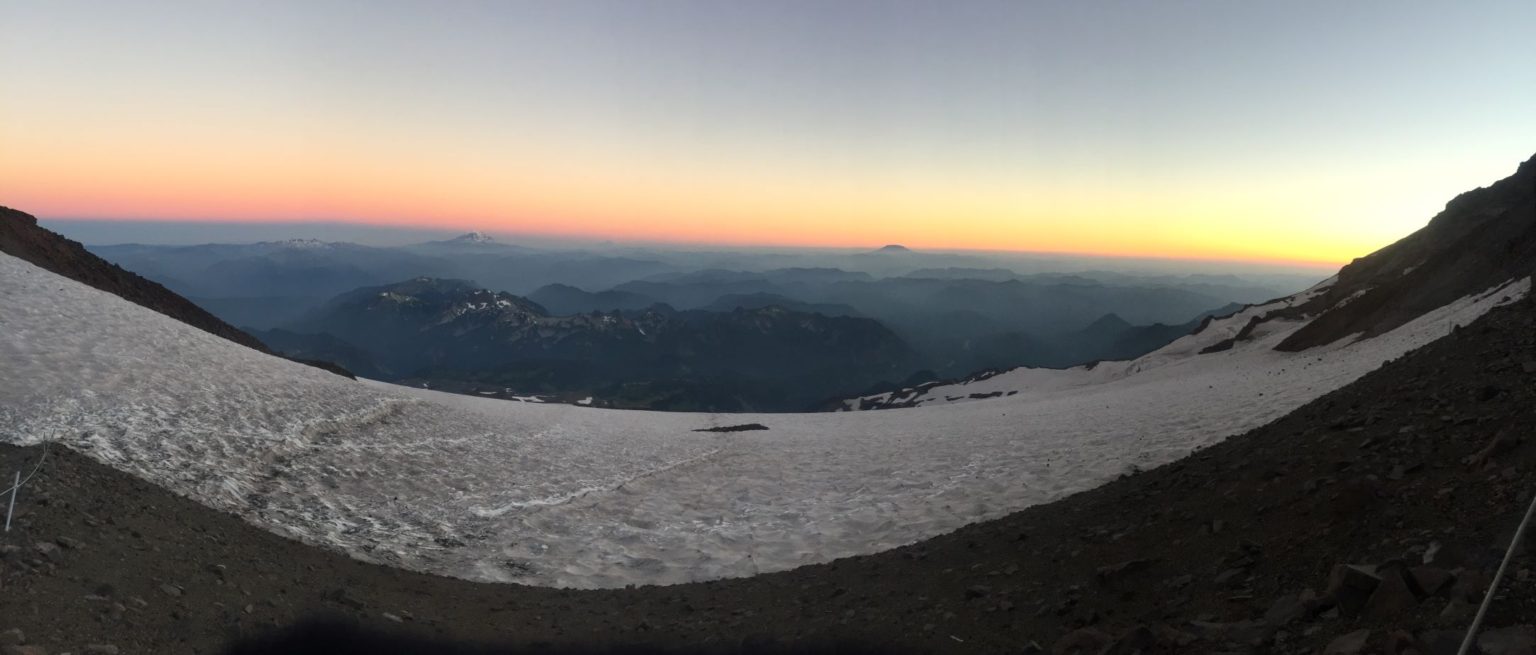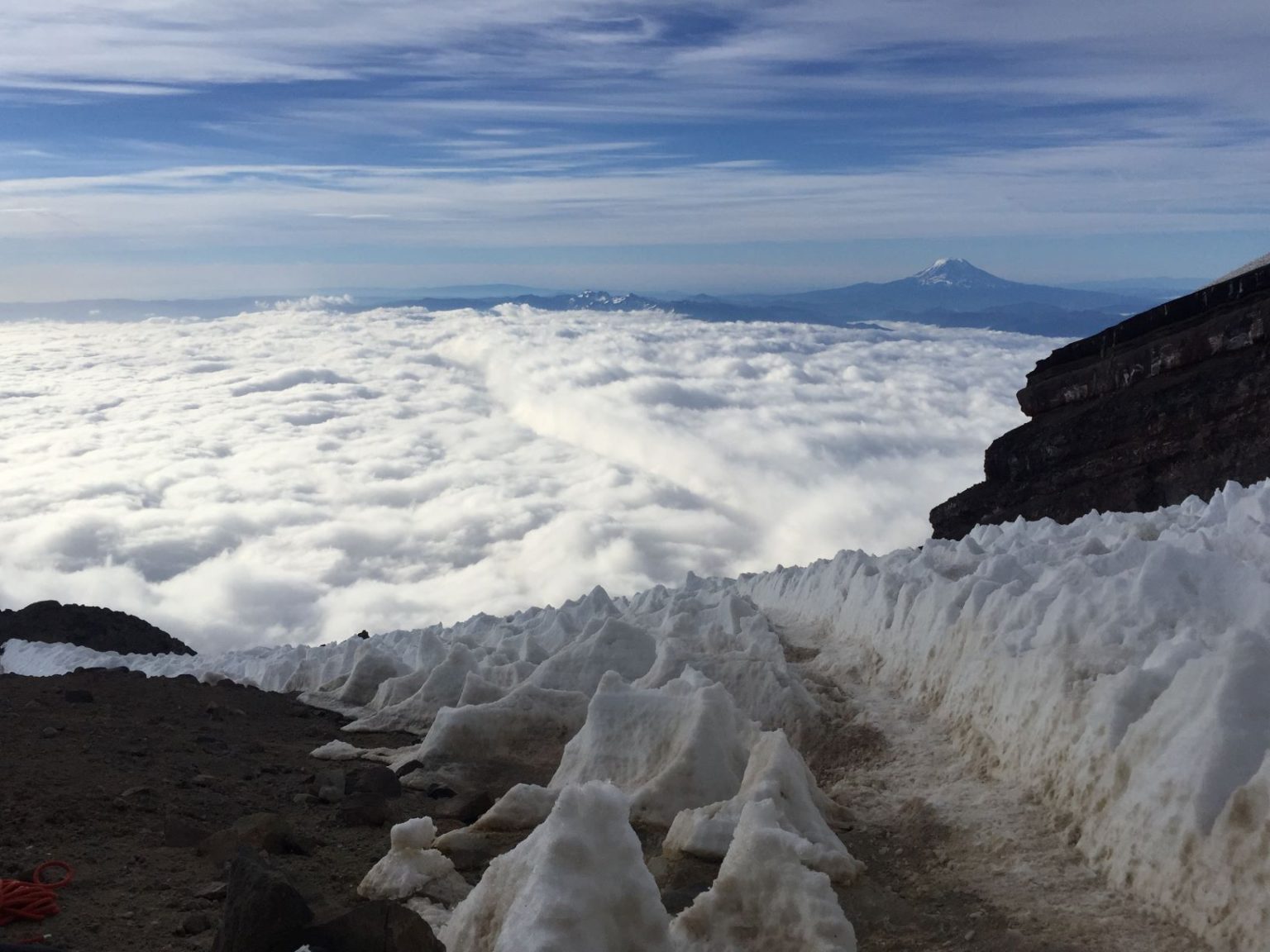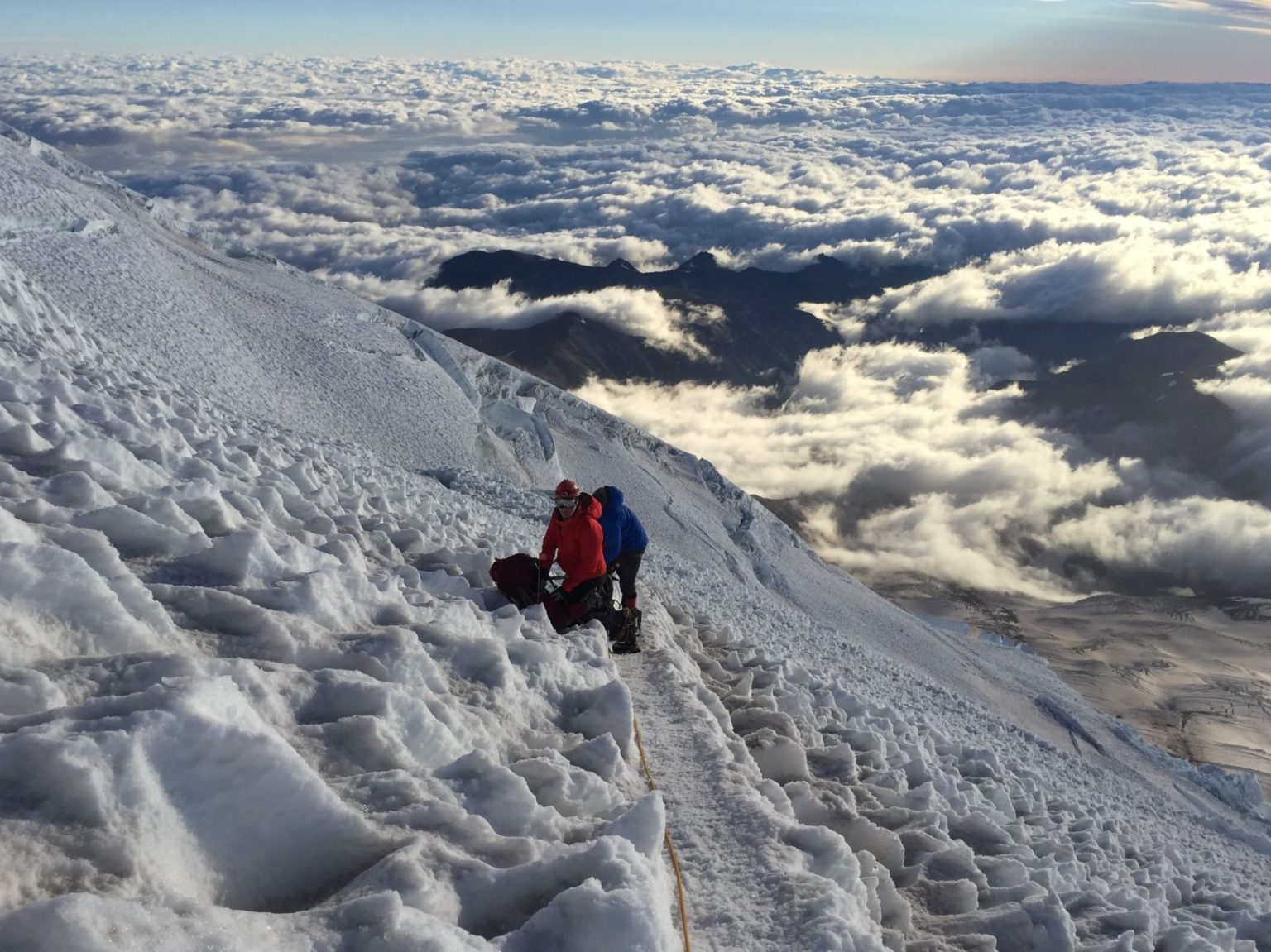Mt Rainier 3 Day Summit Attempt with Alpine Ascents
A friend and I attempted the Mt Rainier 3 day Muir (Disappointment Cleaver) climb with Alpine Ascents in August 2016. It was a great trip but unfortunately we had to turn back about 400 ft below the crater rim due to high winds and a collapsed route (see #6 below). The first day of our climb was extremely hot and calm, followed by cooler temperatures and high winds for the next two days.
All of the guides on our trip were very friendly and helpful. They offered good instructions, were focused on safety, and made awesome dinners and breakfast.
Some advice for the climb:
- Test your helmet to make sure it fits over a slim hat or hood. I didn’t realize until I was on the mountain that I could not fit a hat under my helmet. I rented my helmet and did not test to see if a hat would fit under it. The gear check goes quickly and you won’t have time to test every item, especially if you have to swap out items for different sizes. I definitely would’ve enjoyed a hat on the summit attempt.
- Practice wearing your glacier glasses. I bought fancy Julbo glacier glasses which worked great with the strap, but when the sun came up as we were descending I had to either remove the strap, or my helmet, to get my glasses on. I removed the strap, but then had to continually adjust my glasses because they kept sliding down my face.
- Get a large pee bottle (Nalgene 48 oz collapsible). One person on the trip filled his 32 oz early in the evening. He was then faced with gearing up to hike over to empty it in the latrine area, in the howling wind and dark, or be uncomfortable until 1 in the morning. The collapsible version also saved space in my backpack.
- Get liner gloves which have a touch screen finger. It was great to be able to take pictures with my cell phone without having to take my liner gloves off. I was very happy with my Outdoor Research Sensor gloves.
- The recommended sunscreen tubes popped open in my bag at altitude. Make sure none are completely full, or get sunscreen with a screw on cap.
- Be mentally prepared to cross aluminum ladders. We only crossed one, which had wood planks over the hand rungs. It wasn’t too scary, because the crevasse was not deep, and we clipped into a safety line. Much higher on the mountain, near the crater rim, a second ladder had collapsed into a crevasse, forcing us to turn back (the week preceding the climb was extremely hot).
- Tag any personal gear which will be mixed with the group gear with permanent marker. All of the sharp items (ice axe, crampons, and trekking poles) were placed in a separate bag for the drive to Paradise.
- A long spoon is not necessary. We ate all of our meals in a dining tent, and either used liner gloves or no gloves at all.
- Do not bring any trail mix with chocolate. Due to the warm temperatures on the first day of our climb, all of the chocolate in my trial mix melted, making it very messy to eat. The individually wrapped bite size snickers worked well for me, especially on the summit attempt.
- Make sure you stay hydrated. Hiking from Paradise to camp Muir, the advice from the guides was to bring two bottles of water, and consume half a bottle at each break. I brought two bottles plus a bottle of Gatorade, and drank all of it by the time we got to camp Muir. I also drank a Gatorade in the van between the stop at the store and Paradise. Three climbers in our group were in poor shape by the time we made it to camp Muir, potentially due to dehydration (one person’s pee bottle contained dark yellow pee the following morning).
- Bring food you like to eat. I was jealous of one of the guide’s bag of potato chips.
- Buy good ear plugs and practice sleeping with them. I was able to get a decent night of sleep in the hut at camp Muir, and a few hours of sleep at the high camp on Ingraham glacier. Several climbers in our party did not use ear plugs and complained about snoring and lack of sleep after the first night. The second night was very windy, with the tents noisily flapping around. Many were not able to sleep at all that night.
- Time at least one training hike to make sure you can exceed the minimum training standard (ascend 4,500 ft in 5 hours, carrying a 40 pound pack). Two climbers in our group struggled to make it to the first rest stop and decided to turn back after a conversation with the guides, turning the trip into a very expensive day hike. One of them stated the previous day that her training regiment consisted primarily of bicycling, pulling a trailer.
- Do not wear shorts on the climb from Paradise to Camp Muir. It was very hot the first day, and I considered it, but was glad I wore my hiking/climbing pants, because I did not have to constantly apply sunscreen to my legs.
- Verizon cell service worked at Camp Muir, but there was no AT&T service. On the Ingraham glacier, AT&T service worked well (I was able to Facetime).
- Bring an extra battery to charge your cell phone and/or camera. Keep your phone and battery in your sleeping bag with you at night, to keep the batteries from dying.
- If possible, practice hiking or climbing in high winds. We had very strong winds on our ascent out of the high camp. I was almost knocked over several times by wind gusts, and one person lost their balance and tumbled down 10 or 15 ft before being stopped by another climber.




